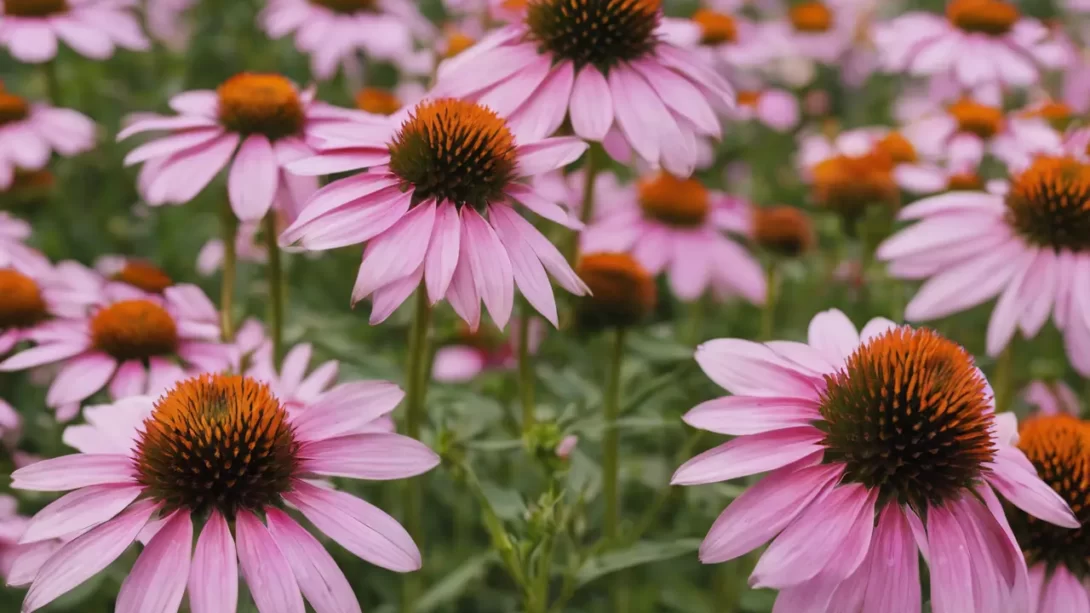Coneflowers, scientifically known as Echinacea, are a mainstay in many gardens due to their vibrant colors and hardy nature. While they are relatively easy to grow and maintain, there may come a time when transplanting is necessary. This article aims to guide gardeners on the best practices for transplanting coneflowers, focusing on optimal timing to ensure the health and longevity of these beloved perennials.
Coneflowers
Coneflowers are known for their distinctive, daisy-like flowers with raised centers. They come in various colors, from the classic purple to shades of pink, white, and yellow. Coneflowers are not only aesthetically pleasing but also attract pollinators like bees and butterflies, making them a valuable addition to any garden. Sometimes, transplanting these plants is essential for reasons such as overcrowding, managing garden design, or moving them to more suitable growing conditions.
Ideal Timing for Transplanting Coneflowers
Choosing the right time to transplant coneflowers is crucial for their survival and growth:
- Best Time of Year: The ideal time to transplant coneflowers is during the cooler months of early spring or early fall. These periods allow the plants to establish themselves in their new location without the stress of extreme heat or cold.
- Considerations for Climate and Growing Zones: Depending on your specific climate and growing zone, the timing might slightly vary. In cooler northern climates, early spring transplanting is preferred, while in warmer southern regions, fall might be more suitable.
Factors Influencing Transplanting Time
Several factors should be considered when deciding on the best time to transplant coneflowers:
- Plant Maturity: It’s best to transplant coneflowers when they are not in active bloom. This typically means before they start their growth spurt in spring or after they have finished blooming in the fall.
- Weather Conditions: Avoid transplanting during periods of extreme weather conditions, such as heatwaves or frosts, as this can add stress to the plants.
- Soil Readiness: Ensure the soil in the new location is workable and not too wet or frozen. Good soil preparation is key to successful transplantation.
Preparing for Transplantation
Proper preparation is crucial for a successful transplant of coneflowers. Here are the steps to ensure your plants are ready to move:
- Watering Before Transplanting: A few days before you plan to transplant, water your coneflowers thoroughly. Well-hydrated plants are more resilient and better able to cope with the stress of being moved.
- Preparing the New Site: Choose a location that receives full to partial sunlight, as coneflowers thrive in bright conditions. The soil should be well-draining and rich in organic matter. Amend the soil with compost if necessary and ensure the site is clear of weeds and debris.
The Transplanting Process
Once the coneflowers and the new site are prepared, follow these steps to transplant:
- Digging Up Coneflowers: Carefully dig around the base of the coneflower, aiming to keep as much of the root system intact as possible. Gently lift the plant out of the ground.
- Moving the Plant: Transport the coneflower to its new location promptly. If you can’t replant it immediately, keep the roots moist by wrapping them in a damp cloth.
- Replanting: Plant the coneflower in the prepared site at the same depth it was previously growing. Space multiple plants about 12 to 18 inches apart to give them room to spread.
- Watering After Transplanting: Water the coneflower generously immediately after transplanting to help settle the soil around the roots and reduce air pockets.
Aftercare for Transplanted Coneflowers
Proper aftercare is essential for the newly transplanted coneflowers to thrive:
- Watering: Keep the soil consistently moist for the first few weeks after transplanting. This helps the plants establish in their new location and recover from transplant shock.
- Mulching: Apply a layer of mulch around the base of the plants to help retain moisture, suppress weeds, and regulate soil temperature.
- Fertilizing: Wait until the coneflowers show signs of new growth before applying a balanced, slow-release fertilizer. Over-fertilizing can stress the plants and should be avoided immediately after transplanting.
Common Challenges and Solutions
Transplanting coneflowers, like any garden task, may present some challenges. Being aware of these and knowing how to address them can ensure a smooth transplanting process:
- Transplant Shock: Coneflowers, like many perennials, may experience shock after being moved. Symptoms include wilting and yellowing leaves. To minimize this, avoid disturbing the root ball too much during transplanting and ensure ample watering afterwards.
- Root Damage: Handle the roots gently during transplanting. If the root ball breaks apart, trim any damaged roots before replanting to encourage healthy regrowth.
- Pests and Diseases: Keep an eye out for signs of pests or diseases after transplanting. Healthy, well-cared-for plants are less likely to succumb to issues, but if problems arise, treat them promptly with appropriate organic or chemical controls.
Conclusion
Transplanting coneflowers can invigorate your garden, giving these beautiful plants a new lease on life. Whether you’re managing garden space, rejuvenating an older plant, or moving to a new location, the key to successful transplantation lies in proper timing, preparation, and aftercare. By transplanting in the early spring or early fall, adequately preparing the planting site, and providing careful attention after the move, you can help ensure that your coneflowers thrive in their new environment.
Coneflowers are not only aesthetically pleasing but also attract beneficial pollinators to the garden, making them a valuable addition to any landscape. With these guidelines in mind, gardeners can confidently transplant coneflowers, ensuring these vibrant and hardy perennials continue to beautify their gardens for years to come.




